
SOME RARE GEMSTONES (20 STONES)
Dive into the captivating world of rare gemstones like Axinite, Benitoite, Serandibite, and Taaffeite. These unique stones boast exceptional colors, fascinating origins, and remarkable optical properties, making them prized treasures for collectors and gem enthusiasts alike. Explore their beauty and rarity!
AXINITE (Rare Gemstone)
Complex Calcium-Aluminum Boro-silicate of Triclinic system -brown or violet bladed crystals, rare Seldom cuttable. R.I-1.675- 1.685, D.R- 0.011 (Biaxial Negative). Fracture Conchodial to brittle. Transparent to translucent, Violet, blue and reddish brown. Stones have the strong dichroism, the three colors being olive -green, voolet – blue and cinnamon – brown for the three directions. Localities-England, France, Mexico, Tasmania & USA. Sri Lanka can be Confused with Andalusite and Smoky Quartz in colour.
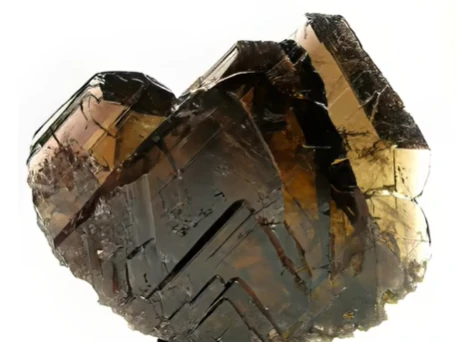

BENITOITE (LOVELY SAPPHIRE BLUE TO LIGHT BLUE) (Rare Gemstone)
Titanium Silicate (BaTi(Si309). Transparent to translucent colorless and light to dark blue coloured stones with Violetish tints caused by strong dispersion often apparent as the stone is turned. It is easily identified by its high birefringence(0.047) which is actually as high as that of diamond. Resemble Sapphire but has “greater fire”.S.G -3.64, R. I-1.757 to 1.804., DR- 0.047, Uniaxial positive Higher DR and strongly dichoric. Very rare from SANBENITO Country and California. Cut specimens over 1cts are extremely rare. A pink variety has been reported. It fluoresces light -blue under short wave (SW)ultraviolet light.


BERYLLONITE (Rare Gemstone)
A Solidum-beryllium phosphate(Na Be Po4). Monoclinic System (PseudoOrthorhombic) Transparent colorless to pale yellow, R.I-1.552-1.562 are between those of beryl and quartz which it resembles. It’s biaxial opticcharcter.S.G-2.85, Hardness 5.1\2-6, Lustre is vitreous. The stones are inert under UV light but under x-rays there is a dark sky blue fluorescence with slight phosphorescence. Also found in Rhodesia, Finland, USA & Zimbabwe.


CASSITERRITE/TIN STONE (Rare Gemstone)
Tin Oxide (SnO2). Tetragonal crystal system. Rarely transparent and translucent colorless and blue. Opaque brown and black Colored stones. Hardness – 61/2, S.G-6.8,R.I -1.997-2.093, DR- 0.96, Dispersion- 0.07.Chief ore of tin. Notable for high density.Gem quality very rare. Cassiterite has an adamantine luster. High luster and dispersion can resemble diamond. The crystals show a only an indistinct cleavage. Localities-England (Cornwal), Bohemia, Saxony, Australia, Mexico, Namibia, south Africa.


DANBURITE (Rare Gemstone)
A calcium borosilicate (CaB2Si208). Minerals most often found in transparent colorless to yellow crystals. May be faceted for Collectors .Crystal systems Orthorhombic Prismatic Crystal shape. Pale Yellow, Pink or Colorless stones are transparent. Hardness-7,S.G-3,R.I-1.630 -1.636D. R 0.006.Faint didymium absorption spectrum Distinguished from Topaz. Which it resembles by lower D.R and S.G. Most Danburite fluorescence in a sky blue and glow when irradiate under ultra violet radiation and the minerals said to phosphorescence.
Fracture is Sub-conchodial. With a reddish tint when heated. It has a Greasy to vitreous luster. Yellow stones are weakly pleochroic -very light yellow and light yellow. Cleavage is imperfect Crystals have excellent clarity, then easy to cut in to brilliant attractive gems..Deposits are found in Burma, Japan, the Malagasy Republic, Switzerland, Mexico and USA. Occurrence – Austria (bronzite), Burma,India (star enstatite), Norway, south Africa, Sri Lanka (cat’s eye), USA.


SMITHSONITE/BONAMITE (Rare Gemstone)
It is some time called bonamite. A Zinc carbonate ( ZnCo3). Trigonal System (Massive) .R.I- 1.621 -1.849, DR 0.1228. uniaxial Negative. Hardness – 5, S.G- 4.40.Unusually Cabochon cut to resemble chrysoprase or jadeite. Luster – Vitreous to pearly. Translucent to semi translucent from in White,yellow, light green, greenish blue colors Pink stones due to Cobalt. Localities – Greece, New Mexico, Namibia, Spain, USA and Sardinia.
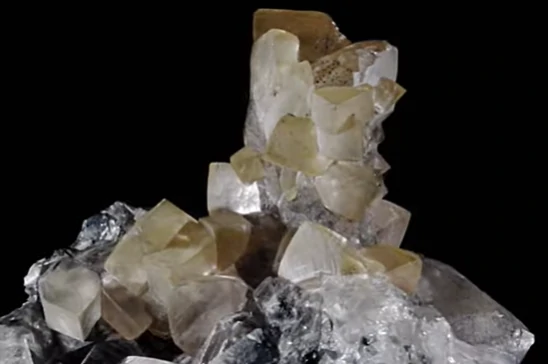

DIOPSIDE (Rare Gemstone)
A calcium- magnesium Silicate (CaMg (SiO3)2). Monoclinic. A Pyroxene, Brown, Pale green to dark in transparent to translucent from blue or Colorless. Hardness- 5, S.G 3.29, R.I -1.67-1.70. DR – 0.26. (Biaxial positive). Distinguished from peridot by shade of green and rather higher R.I and lower D.R and S.G. Chrome rich stones provide a very fine intense green. Some times with strong chatoyant streak (fibrous producing cat’s eye when cut and cabochon). black or dark grey chatoyant and Asteriated stones have come from India. Transparent usually green but may be brown or Pleochroism is weak to moderate.
Diopside has perfect cleavage. The violetish – blue verity from piemont Italy is called violane. Diopside shows absorption lines in blue – green. Chrome rich diopside may also show chromium lines in a red Star diopside and cat’s eye diopside, Emerald green diopsides are much in demand. Luminescence is variable. Occurrence Austrália,Brazil, Burma, the Malagasy republic, South Africa,Sri Lanka and USA.

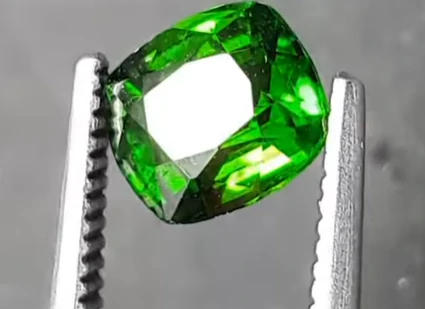
ENSTATITE (Rare Gemstone)
A Magnesium Iron Silicate (MgFe)SiO3. Orthorhombic. Transparent to translucent yellowish green to brownish -green to reddish-brown green, grey,bronze ( called bronzite) gray-green cat’ eye.Hardness -5 1/2 S.G-3.27, R.I-1.66-1.67(-). lustre vitreous. Easily identified by narrow absorption line between green and blue (5060 A°) Through some diopside Show a double line in the same position. Like diopside, jadeite, and spodumene. Enstatite belongs to the important ‘Pyroxine” family of minerals .Enstatite has easy Cleavage, with about 88 between the two directions. Brown stones weak pleochroismin the green type stones but strong in the brown. Dichorism is week. The twin colors being green and yellowish-green. Occurrence- Austria (bronzite), Burma,India (star enstatite),Norway, south Africa, Sri Lanka (cat’s eye), USA.
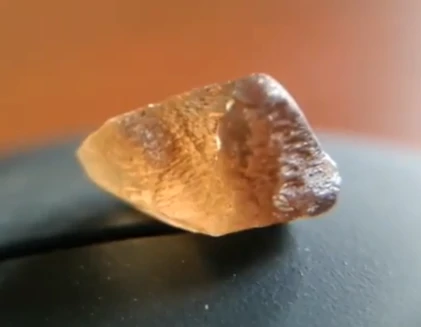

EPIDOTE (Rare Gemstone)
Monoclinic in luestres prismatic Crystals Peculiar dark brownish green. some times called pistachio green transmitting very little light. Hardness -61⁄2, S.G-3.35, R.I-1.736-1.770 , DR -0.035. Biaxial Negative. Transparent to semi translucent in reddish, yellow and gray colors. Calcium Aluminium silicate (Ca2A12 )(AIOH)( SiO4)3) with the some iron also called pistacite. Chrome green epidote is known as Tawnamite. The crystals show a brilliant luster. The strong Pleochroism color in generally too dark to be Attractive to distinctive shade. Epidote has excellent cleavage. Location are Italy, France, Germany, Alaska, Norway, Mozambique, Mexico and USA.


IDOCRASE/VESUVIANITE (Rare Gemstone)
Calcium Aluminum Silicate also contain beryllium, boron, fluorine and titanium. (Ca, Al(Al OH) (SiO4)5).Tetragonal. Transparent usually green but may be brown or gray. Well developed crystals with prisms vertically striated pyramid and Basel plane ‘Califonite’ is a green massive Jade like type. ‘cyprine’is a blue colored stones from Norway. .xanthite is a massive, opaque, yellow-green. ‘wiluite’ from Siberia after a river. Cleavage is poor.R.I-1.713-1.718, D.R-0.069(-), Lustre is vitreous. Fracture- Sub-conchodial. Localities- Austria, Canada, Italy, USA.


JEREMEJEVITE (Rare Gemstone)
Chemical composition A16(Bo3)5(F, OH)3. Hexagonal crystal system and long prismatic habit. Transparent to pale blue green, cornflower blue, brown and colorless. Cornflower blue crystals are extremely rare. Fracture is conchoidal. Lustre is vitreous. R.I-1.644-1.653, DR-0.013, Uniaxial (-), S.G-3.27-3.29 – Hardness-7-7.5, Localities – Namibia & USSR.


PHENAKITE (Rare Gemstone)
Beryllium Silicate BeSiO4. Trigonal.Hardness 7 1/2, S.G- 2.95, R.I.-1.654-1.670, DR – 0.016,Uniaxial positive. An Exceptionally bright stone when well cut. The transparent crystals are usually colorless, but some time is light red or light yellow .which has a strong yellow fluorescence under UV light and x-rays. The crystals show no distinct cleavage. The stones have little “fire.”Crystals of a bright wine yellow and a pale rose red said to “emanate’.Its strong dichroism (peacock blue to violet red).Localities are Russia, North and South America.


PREHNITE (Rare Gemstone)
A hydrated Calcium Aluminium Silicate (Ca2A12 (Oh2)Si3010) Rhombic in nodular Masses. Transparent to translucent yellowish- green, brown- yellow. Prehnite has been cut as cabochons ,or as carved pieces. The coluor is oil green =jade…R- I-1.61-1.64, DR-0.03(+), S.G-2.86, Seldom cut,some what resemble pale green jade and has a vitreous luster. Prehnite is Sensitive to heat. Brownish yellow chatoyant stones may show a dull brownish yellow glow and UV light. some translucent pale yellowish -brown stones have been cut cabochon and the stones show a cat’s eye effect. Localities- Australia, North America Russia and North and South America, France, China, Scotland, S. Africa.


SCHEELITE (Rare Gemstone)
The Mineral calcium tungstate (CaWo4) Tetragonal to by pyramidal system. Transparent to translucent colorless, brownish, orange, yellowish white. R.I -1.918-1.934,DR -0.016(+). Fluoresces strongly in a bright blue color under SW UV light. Powellite exhibits a golden yellow fluoresces. Both chatyont and four rayed star scheelite are known. Synthetic Scheelite has been grown by the czochralski and Bridgeman.


SERANDIBITE (Rare Gemstone)
Chemical composition (CaNa)2(MgFe)3(O2(SiAIB) 6018).R.I- 1.701 -1.706,DR – 0.005.Biaxial (+), Hardness is – 6- 7,S.G-3.4.Triclinic crystal system and granular habit. Transparent to Translucent small Grayish blue green to deep blue tabular crystals. Lustre is vitreous. Fracture uneven. cut stone are very rare. Locality – U.S.A., Sri Lanka from Gangapitiya near Ambakotte. Fracture is conchodial, splintery and brittle.


ULEXITE/TELEVISION STONE (Rare Gemstone)
Hydrated borate of calcium and sodium (NaCa B5 09, 8H2O)R.I- 1.491-1.520, Hardness -01, DR – (+)0.029, S.G -1.9 -2.0.Triclinic crystal system and fibrous agate. Fluorescence is blue and green under short wave UV.


SAPPHRINE (Rare Gemstone)
Chemical Composition – BeMgA1408, Crystal system -Hexagonal prismatic. R.I -1.7181.722, DR -0.004 Uniaxial – Negative (-),Hardness – 8 S.G -3.60 3.61, Luster -vitreous,Dispersion – 0.020,Pleochroism – week. Fracture- conchoidal. Transparent to Translucent stones are color Range – Lilac,Pink and violet. Found in Sri Lanka, Tanzania and China.
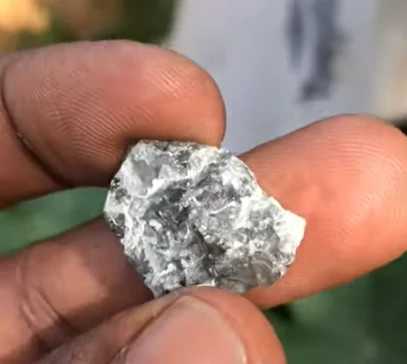

DUMORTIERITE (Rare Gemstone)
Complex Aluminium Boro Silicate (AI(AIO)7) (BOH)(SiO4)3). Forms fibrous or Columnar Crystals in the Orthorhombic system. Crystal are rare. Translucent to semi Opaque Dark blue,violet -blue ,pink, light yellow and brown. R.I -1.686-1.723, DR -0.037, Hardness -7,S.G-3.21- 3.41. Opaque blue mineral has the high R.I and S.G. It is easily distinguished from lapis lazuli. Luster is vitreous and dull Pleochorism – black,deep red – brown and brown. Some times called the ‘blue denim stone’ .It has deep blue to violet blue color Also found in cat’s eye. Localities -France Mozambique,America,Brazil,Siberia,India & South Africa.

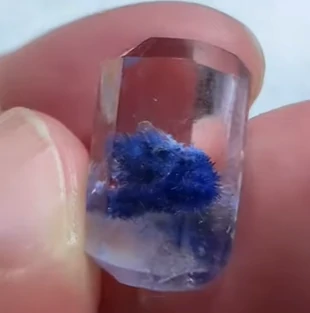
MUSGRAVITE (Rare Gemstone)
Transparent to Translucent colorless or pale grey,green or brown .Lustre is vitreous pearly parallel to cleavage. Reflective Index – 1.719-1.735 (e) / 1725 -1.739 (0), Double Reflective 0.014-0.016, Transparent Green and Green, S.G -2.8-2.9, monoclinic (pseudo-hexagonal) Varieties-Sericite – A fine grained white mica. Illite Illite – A degraded white mica found in – A sodium containing variety soils. Paragonite found rarely in some schists. Galuconite – A green mineral is found in greenlands. Lepidolite- An allied lithium – containing mineral as an attractive pink.


TAAFFEITE (Rare Gemstone)
Chemical Composition in Mg5 A112 Si2 027 Silicate Containing Magnesium and Aluminum.monoclinic crystal and tabular habit. R.I -1.701 -1.734, D.R-0.004-0.005, Biaxial (-),Hardness 7.5, S.G- 3.42 3.48, Transparent to Translucent light to dark blue and green crystals. A Misleading name for blue chalcedony, Blue spinal and a blue glass, sapphrine simulate. Pleochroism is strong with a blue colored stones. Cut stones are very rare. Localities are Sri Lanka and USA.


Gemstone Clarity Grades: Understanding FL, IF, VVS, VS, SI, and I Clarity Grades



